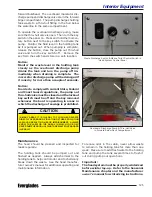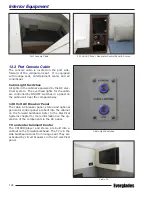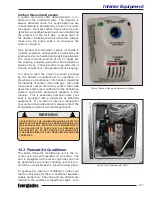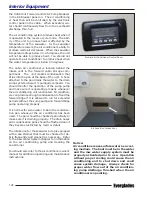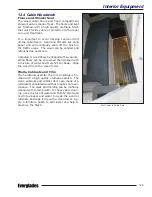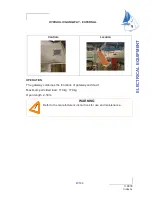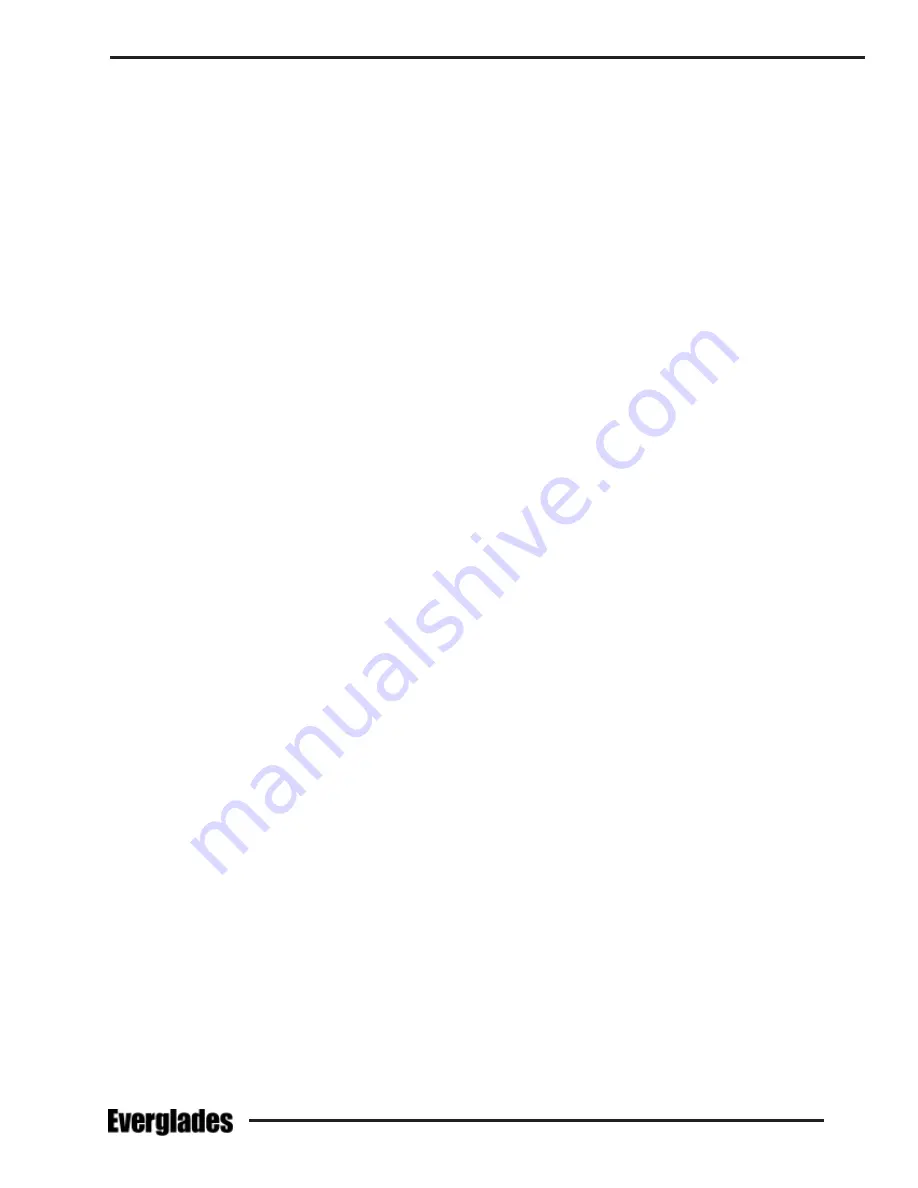
137
Routine Maintenance
Harsh cleaners and scouring pads will damage the
polymer surface of Faux Granite.
In most cases, Faux Granite can be repaired if
accidentally damaged. Small scratches that do
not penetrate the coating can be repaired using
an automotive buffing compound. Deep scratches
and heavy damage require a professional repair.
Contact your dealer or a counter top repair profes-
sional for assistance in repairing deep scratches
or other damage on your counter tops.
Interior Woodwork
Oiled and varnished woodwork or laminated,
simulated wood can be cleaned with a damp cloth.
For heavy duty cleaning, use a mixture of water
and Murphy’s Oil Soap or a solution of 10% white
vinegar and water to clean the wood and wipe it
dry with a clean towel. Apply a furniture polish to
add luster and help to preserve the finish.
13.4 Engines and Fuel
Proper engine maintenance is essential to the
proper performance and reliability of your out-
board engines. Maintenance schedules and proce-
dures are outlined in your engine owner’s manual.
They should be followed exactly.
If the boat is used in saltwater, flush the cooling
system after each daily use. To flush the systems
when the boat is out of the water, follow the pro-
cedure outlined in your engine owner’s manual.
Proper engine operation requires a good supply
of clean, dry fuel. Improper marina fuel storage
techniques, limited boat usage, etc. can cause the
fuel to become contaminated.
The age of fuel can affect engine performance.
Chemical changes occur as the fuel ages that can
cause deposits and reduce the octane rating of
the fuel. Severely degraded fuel can damage the
engine and boat fuel tank and lines. Therefore,
if your boat is not being run enough to require at
least one full tank of fresh fuel a month, a fuel ad-
ditive should be added to protect it from degrada-
tion. Your dealer or the engine manufacturer can
provide additional information on fuel degradation
and fuel stabilizers recommended for your engine.
In many states, most gasoline is blended with
ethanol alcohol. Ethanol is a strong solvent and
can absorb water during periods of storage. You
should refer to the engine operating manual for
information regarding alcohol blended fuels and
how it affects the operation of your marine engine.
13.5 Generator
The engine maintenance required on the generator
is similar in many ways to the main engines. The
engine incorporates a pressure-type lubrication
system and a fresh water cooled engine block
which is thermostatically controlled.
The seawater cooling system on the generator is
equipped with a sacrificial anode to protect cooling
system components from galvanic corrosion. The
anode should be inspected when the generator is
serviced and replaced when it is 75% of its original
size or at least once each year.
The most important factors to the generator’s lon-
gevity are proper ventilation and maintenance of
the fuel system, ignition system, cooling system,
lubrication system and the AC alternator.
Maintenance schedules and procedures are out-
lined in your generator owner’s manual. They
should be followed exactly.
Notice:
The generator charges the house batteries
just enough to compensate for the DC elec-
trical current the engine requires to operate.
Therefore, it is important to activate the
battery charger to maintain the house and
engine batteries whenever the generator is
running.
13.6 Bilge, Pumps & Components
To keep the bilge clean and fresh, it is recom-
mended that you use a commercial bilge cleaner
on a regular basis. Follow the directions carefully.
All exposed pumps and metal components in the
bilge should be sprayed periodically with a pro-
tector to reduce the corrosive effects of the high
humidity always present in these areas.
Periodically check the bilge pumps and alarms for
proper operation and clean debris from the strain-
ers and automatic switches. Inspect all hoses,
clamps and thru-hulls for leaks and tightness on a
regular basis. Operate all thru-hull valves at least
once a month to keep them operating properly.
Frequently test the automatic bilge pump switches
for proper operation. This is accomplished by us-
ing the test knob or buttons on the side of external
Summary of Contents for 340 DC
Page 1: ...OWNER S MANUAL 340 DC...
Page 2: ...2 Revision 0 11 07 2018...
Page 14: ...14 NOTES...
Page 22: ...22 NOTES...
Page 25: ...25 Operation...
Page 86: ...86 NOTES...
Page 102: ...102 NOTES...
Page 122: ...122 NOTES...
Page 130: ...130 NOTES...
Page 149: ...149 MAINTENANCE LOG Appendix B Hours Date Dealer Service Repairs...
Page 150: ...150 Maintenance Log Hours Date Dealer Service Repairs...
Page 151: ...151 Maintenance Log Hours Date Dealer Service Repairs...
Page 152: ...152 Maintenance Log Hours Date Dealer Service Repairs...
Page 153: ...153 Maintenance Log Hours Date Dealer Service Repairs...
Page 154: ...154 Maintenance Log Hours Date Dealer Service Repairs...
Page 155: ...155 Appendix C BOATING ACCIDENT REPORT...
Page 156: ...156 Boating Accident Report...
Page 157: ...157 Boating Accident Report...
Page 158: ...158 NOTES...
Page 160: ...160 NOTES...
Page 167: ...CAUSE AND SOLUTION...



